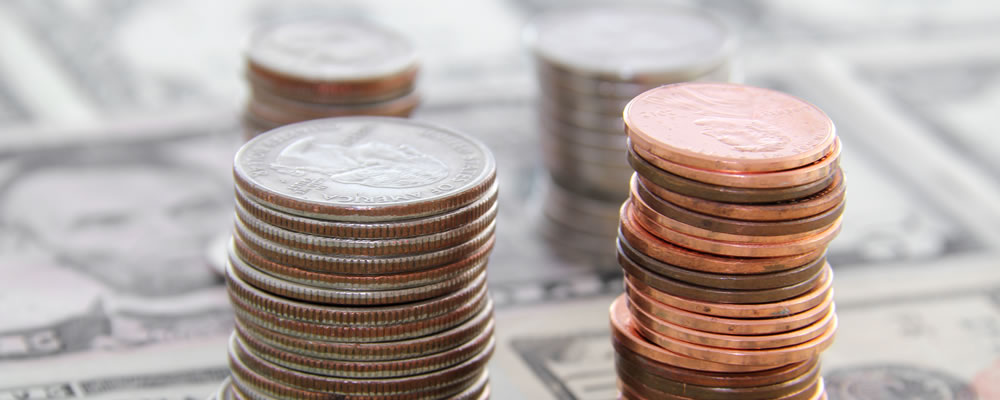Weak public sector borrowing figures have undermined Pound exchange rates today, after showing national debt has risen to a fresh record high.
- Pound exchange rates weak after borrowing data – Public spending outpaces forecast
- Euro climbs on QE hopes – Third ECB policymaker expresses disappointment with asset purchasing effects
- US Dollar advances on policy outlook – Investors look for three rate hikes
- Pound exchange rates forecast to weaken – US data tomorrow to dominate calendar
The Euro is advancing on the hopes that quantitative easing may be rowed back, while the US Dollar is on the rise against the Pound thanks to next year’s strong monetary policy outlook.
Pound Exchange Rates Weaken as UK Deficit Widens Above Forecast
UK national debt has hit a fresh record high following wider-than-expected public deficits in November. Although public sector net borrowing was £400 million less than a year ago, the above forecast overshoot of -£12.6 billion has taken the national debt to £1.655 trillion, or 84.5% of GDP. Markets had expected borrowing to increase from -£4.3 billion to -£11.6 billion.
Once again, investors are worried that the latest borrowing figures show Chancellor Philip Hammond will have little room to manoeuvre when he delivers his first March Budget next year.
The Chancellor had previously suggested he would increase spending to help counter the economic impact of Brexit, but rising borrowing makes this unlikely. This is especially true given that the Office for Budget Responsibility (OBR) has forecast borrowing for the rest of the fiscal year will be higher than the same period of time twelve months ago. Although the overall deficit will still have fallen on a year ago – barring something catastrophic – investors will not be impressed by the worsening outlook for the UK’s national debt, which many analysts claim is unsustainable.
Euro Advances; Has ECB’s Rimsevics Strengthened the Case for QE Taper?
Member of the European Central Bank’s (ECB) Governing Council and head of the Latvian central bank Ilmars Rimsevics has commented today that the effects of QE have disappointed.
Becoming the third Eurozone rate setter to offer a downbeat outlook on the impact of the ECB’s enormous – and recently extended – asset purchasing programme, Rimsevics said in a Latvian radio interview that;
‘This flooding of [ECB] money has helped stabilize the situation, but has not really given a substantial boost to the overall growth of economy.’
Last week saw Peter Praet – the ECB Chief Economist and architect of the asset purchasing programme – and Jens Weidmann express disappointment over the impact quantitative easing has had on the Eurozone economy.
With the consensus appearing to be that QE has been a stabilising factor, but is unable to boost inflationary pressures, the Euro is rising on market hopes that the ECB may change its stance that there is no end in sight for the stimulus measure.
US Dollar Advances against the Pound on Market Pricing of US Rate Hike Hopes

With little immediate news and data to focus on, markets are looking ahead to 2017 and what that may bring the US Dollar. Investors have decided that the prognosis is good; the yield curve on US bonds has risen the most in three weeks.
A rising yield curve means that investors are expecting inflation to rise and will therefore require higher interest rates on new bonds bought in the long-term to compensate for the way price growth erodes their returns.
However, analysts are warning that markets have focussed too much on the positives and not enough on the threats 2017 brings with it.
Donald Trump’s Presidency may bring a huge stimulus spending drive that will boost US inflation and provoke the Federal Reserve to hike interest rates, but his strong anti-trade and anti-immigration stance could seriously hamper the US economy, according to experts.
Pound Exchange Rates Forecast; US Data to Rule the Day as UK and Eurozone Calendars Remain Sparse
While UK and Eurozone data may be drying up ahead of the Christmas break, the US calendar remains packed full of releases. Not only will this create volatility for GBP USD, but also for GBP EUR as the common currency will be moved by its inverse correlation to the ‘Greenback’.
Among the medium-impact releases are the tier-one preliminary durable goods orders – predicted to decline -4.5% – and personal consumption data. As the Fed’s preferred measure of inflation, the latter could see the US Dollar closing the week on a high if the result is positive.
Interbank Pound Exchange Rates
At the time of writing, the interbank Pound Euro exchange rate was trading at 1.18 and the Pound US Dollar exchange rate was trading at 1.23.



